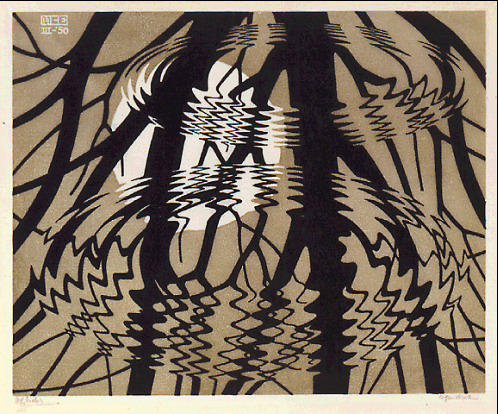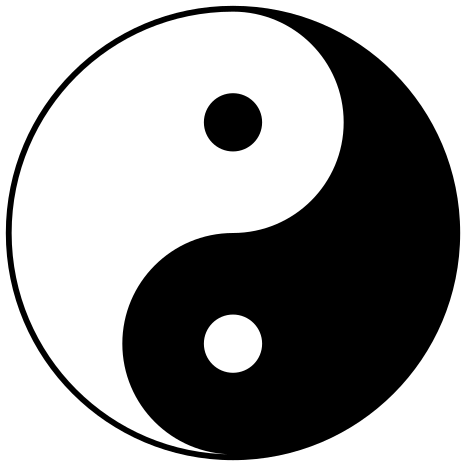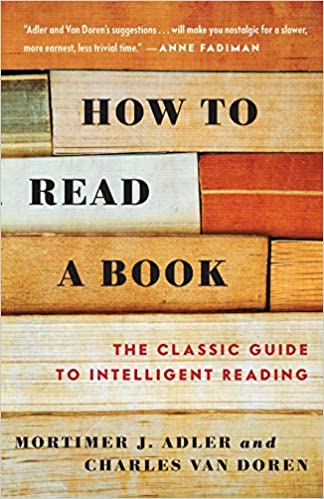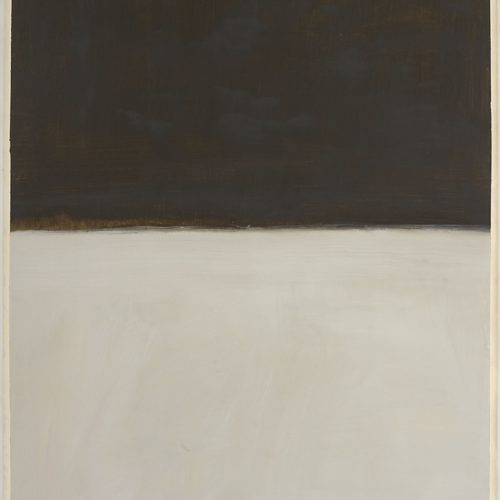Belief is a word that conjures religious connotations, whether good or bad. We think of faith-like belief as what is always being tested by the trials of life, yet something we cling to it, like hope and meaning. Or we think of it as a dogmatic, unquestioning belief in some authority that results in ignorance and violence. The word belief seems to bring a wide swath of moral judgments, and I think, if we break down the meaning of belief, we can find out how to appropriately proportion our beliefs to reality and morality.
If we approach belief reflectively, we will find the inevitability of faith in the very basis for how we understand the world. Regardless of how “rational” or “skeptical” we claim to be, faithful belief will be functioning. It is the awareness of how faith functions that we can begin to learn and believe with an honest and humble mind. Faith will then have neither its ideal connotation, nor its vicious one. Once understood, belief will be a nuanced way of navigating truth.
Belief Is in Ideas… for Interpreting Experience
We have belief only in ideas. Sure, we may have some kind of belief in our in our immediate experiences, but that is a concept that is quite different, relating more to presence of mind than in intellect. What it is we have faith-like belief in is what is not seen. Ideas, are not sensed, but they assist sensation in its conceptualizing. It is only in these abstract concepts or ideas that we can believe—in the way we normally talk about belief. That is not to say that we cannot have belief in something that has substance or consequence. We only have the belief in the conceptualized idea which contains more than what is immediate.
What is an idea? We think of it typically as something floating in our minds that we use to think. But more basically, an idea is a way we have been interpreting the world based on past experience or learning from others. Ideas do not exist merely as words, but as interpretations of experiences with which words help to define. When we have an idea of an enemy, we know to have caution when approaching someone who fits into that concept. Ideas are more like habits of perception and interpretation of events and objects. So, they are not the object itself, but what we add to the object in our conceptualizing of it; ideas are the intelligible, not the visible, in the language of Plato.
Religion, an institution most known for being conscious of the need for faithful belief, can be defined by its holding of a belief in unseen ideas. William James defines religion as “the belief that there is an unseen order, and that our supreme good lies in harmoniously adjusting ourselves thereto.” Of course, that is something that we all do, we cannot see many things that we learn in science class, yet we have faith in the accuracy of their foundation and conception—particularly due to scientists privileged look at the world (through instruments and experiments), consistent logic, and power to explain phenomenon. But it is in some way that we must put down trust in order to continue to learn.
Foundations for Learning: Accommodation and Assimilation

Jean Piaget is a developmental psychologist most known for his theories in cognitive advancement. On the subject of learning, he suggested the division between assimilation and accommodation. These are both two types of reaction to new information, or rather, these are two ways of learning which are based on the adding to forming or already formed ideas. Here, Piaget helps us to understand how in order to learn, one must have some faith in their ideas.
“Assimilation occurs . . . when a stimulus or an event is acted upon, perceived, and understood in accordance with existing patterns of thought.”
Robert Feldman in Development Across the Lifespan
Assimilating something new means to add to the habit of perception a new possibility, but we retain our general worldview. When we see something new or are proposed a new idea, we see how it fits into our current understanding of a system. When we are told a way in which a dog behaves similarly to a wolf, we can easily accept this with our basic understanding of the canine genus. The new information does not surprise us so much as it gives us another fact to solidify and give nuance to our understanding.
As well as giving our understanding more facts, detail, and nuance, assimilating also confirms and strengthens the understanding that we already have, so long as it is interpreted as consistent. But if new information is not consistent with our current views, learning new things takes the form of accommodation.
Accommodation is “when we change our existing ways of thinking, understanding, or behaving in response to encounters with new stimuli or events.”
Robert Feldman in Development Across the Lifespan
Accommodation, as our beliefs become more solidified, tends to be an uncomfortable process. Our ways of thinking and interpreting the world have become well-learned habits which take effort to budge. The more one has assimilated on top of one’s beliefs the more reorganizing one has to do when learning a challenging idea. This is a highly emotional process, and only ideas which we cannot deny force us to put the effort in to accommodate them.
Our experience of learning is constantly alternating between agreeably assimilating information into the system we know and accommodating new information by adjusting the system of ideas that we have. But we can begin to see how belief is relevant to these two ways of learning. Belief is a foundation for understanding, but it also changes according to what it supports.
Sometimes we feel we have a shaky foundation onto which any new fact may seem plausible. Sometimes we have vehement belief in the system we understand that overshadows all new information. That system of belief (or ideology) my render many sources of information as biased beyond consideration. And sometimes our system of belief puts huge amounts of faith in a source of information, as in a kind of guru. When we feel naïve, we tend to do more accommodating, and when we have confidence in our understanding, we do more assimilating.

There is a yin and yang relationship between these two concepts. Accommodation is present in assimilation, and assimilation in accommodation. When we assimilate information, we slightly change our system of beliefs, as I said, giving it more nuance. When we change our ideas, that is only because, in our system of belief, there is an open-mindedness through which challenging ideas can penetrate. Because our proposal is that it requires belief in order to understand, we will want to remember when and where assimilation is active.
We Need to Believe in Order to Learn: Assimilation-Based Learning
It seems necessary that in assimilating new information one must start with something to base that information off of. A pure skeptic can never learn because he or she would not be able to move on from the doubt of their very senses and experience. To move on from a proposition it to assume its truth. Even if one says it is temporary belief, by interpreting more information based on that belief, one acts as if they believe, which is as good as belief itself. Withholding judgement is easier said than done. It seems we have no choice, if we want to learn, to have a system of basic beliefs. Historically, great thinkers seem to believe this as well.
“I believe in order to understand.” – Anselm
“Without belief it is impossible to understand.” – Saint Augustine
“Even Aristotle says that every learner must first be a believer in order to come to full knowledge. Thus in order that a person come to the full, beautific vision, the first requisite is that he believe God, as a learner believing the master teaching him.” – Thomas Aquinas

These thinkers know that it takes a system of belief in order to interpret and give context to our experiences and new ideas. We must have a basis for our skepticism and agreeableness. In the case of many of those thinkers, it is through their religion that they interpret much of their world, orient their actions, and organize their ideas.
And without condoning or condemning any particular fashion of belief system, we can see how this attitude towards faith-based understanding can be both true and false. In a well-formed system of belief, one can gain a much deeper understanding through religions or science or philosophy. Consider the simplified presentations of neuroscience to the public: we hear about dopamine all the time, as if it was not connected to a multitude of other functions besides our feeling of reward. In-depth understanding is required to make sense of these bite-sized facts.
George Lakoff and Mark Johnson give us some examples of facts that may be “true enough” for a general public but false if one has a deeper understanding. Some examples follow:
Italy is boot-shaped.
An atom is a tiny solar system with the nucleus at the center and electrons whirling around it.
Light consists of particles.
Light consists of waves.
These all require understanding in order to have an accurate idea of any of these “facts.”
Where previous belief is actually deleterious of truthful understanding is when it comes to an ideological belief system that is narrow and considers very little. Rather than using previous understanding and belief to learn, it is used to stagnate and cease learning. With a narrow view, often caused by emotional disorganization and unreflective thinking, one sees only what one wants to see. Those who see the world in terms of power and secrecy will inevitably see conspiring entities behind everything they do not understand, whether or not conspiracy is there.
In almost all cases, our core belief system is one of an emotional bent. It may contain one’s capacity for optimism, trust, autonomy, and self-worth. Thus, our upbringing has much to do with where our foundational beliefs come from. The very bedrock of our culture—both broad and local culture—is also responsible for the faith-based beliefs we start with. But this is not reason to despise these natural biases, because, once again, they supply us with a basis for greater understanding through assimilation of new ideas.
Cultures “are restrictive in that they impose upon individuals born into them an already fixed-system of signification. . . But cultures are also liberating because paradoxically they provide the textual resources by which individuals can seek new meanings on their own.”
Marcel Danesi in Messages, Signs, and Meanings
The restriction of culture is what makes for harmful ideologies to take root and find groups to reveal themselves in—due to a collective emotional organization. This is why epistemology and discussion about learning itself is so interesting. An understanding about learning can help us to allow in ideas that may have been totally and irrationally denied. We shall continue here with the goal of discovering what it takes to balance the vices and virtues of assimilation-based learning.
“The greatest enemy of any one of our truths may be the rest of our truths. Truths have once for all this desperate instinct of self-preservation and of desire to extinguish whatever contradicts them.”
William James in Pragmatism
Organizing an Open Faith: Practicing Rational Accommodation
For us to be aware of the faults of our beliefs, we must have a belief system that understands itself. We must create in ourselves a self-correcting method of allowing in ideas worthy of our accommodation. Remember a belief system too narrow will be ideological, and one too wide will be easily swayed and ungrounded.
Daniel Kahneman is a scientist and economist that suggests a method for navigating the biasing effects of our belief systems.
“Understanding a statement must begin with an attempt to believe it: you must first know what the idea would mean if it were true. Only then can you decide whether or not to unbelieve it.”
Daniel Kahneman in Thinking, Fast and Slow
Kahneman, famous for his work on cognitive biases, was well aware of all the psychological mechanisms that protect us from believing new information. For that reason, he suggests some intentional naivety and open-mindedness. If I had to make one change it would be to say “an attempt to understand it” rather than “believe it.” Attempting to understand a new idea is good whether you believe it or not. One can be too quick to agree even before you understand. We must actively reach toward the new ideas and try all we can to understand it first, and then we can charge the idea with truth or falsehood.
We Must Believe to Understand and Understand to Know
Now we can see the problem a little more clearly: we need grounds for accepting challenging information or grounds to trust our previous belief system. Assimilation without accommodation often converts information into something which you already understand. Accommodation without assimilation is wishy-washy, you are moved around from belief to belief, and there is little connection between them. This is why an active attempt at understanding new information is necessary, it transcends the dichotomy and utilizes both equally, as in the yin and yang metaphor.
We must put out effort to understand any novel idea exactly how the other person intends it to be understood. If we seek to understand in a dialogue, it may become apparent that the other person does not understand at all and we will have grounds to deny the claim. Or if we first put the work in to understand we cannot help but both assimilating and accommodating new and reliable information.

In How to Read a Book, Mortimer Adler emphasizes that you must understand in detail everything the author is saying in order to make a judgment on whether or not it is true or worthy.
“Do not say you agree, disagree, or suspend judgement, until you can say ‘I understand.’”
Mortimer Adler
Not only must we first understand to make a judgement, but you also have the duty to make a decision or judgement of the ideas if you do understand it.
We must understand how something might be true in order to know if it is true. If one does not understand one must not criticize or agree; instead we must withhold judgment and continue seeking to understand.



